
Acne Scars Treatment
Lighten and improve the appearance of acne scars.
How Does Acne Lead To Scarring?
Acne occurs when the pores of the skin become blocked with oil secretion, dead skin, or bacteria remains. These will usually heal naturally if left undisturbed, but some individuals may experience severe outbreaks, which can become inflamed and cystic. In these severe cases, tissue in the skin may be damaged and heal irregularly, creating unsightly scars.
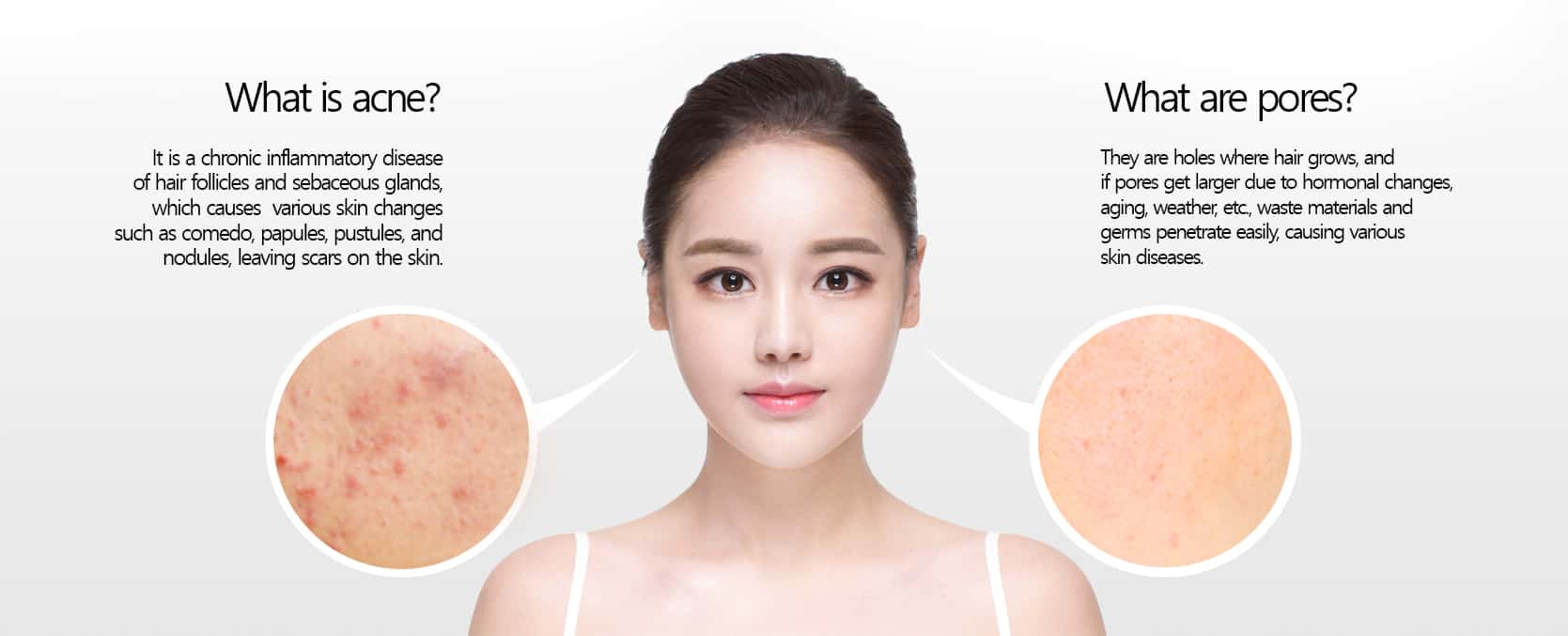
Types Of Acne Scars
There are three main types of acne scars:
- Hypertrophic or keloid scars, showing up as raised areas in the skin
- Atrophic scars, looking like small holes or depressed areas in the skin
- Post-inflammatory pigmentation, which look like darkened spots and appear after the acne outbreak
Treatments For Post-inflammatory Pigmentation, Hypertrophic & Keloid Scars
When addressing both post-inflammatory pigmentation, hypertrophic and keloid scars, the following treatments are recommended.
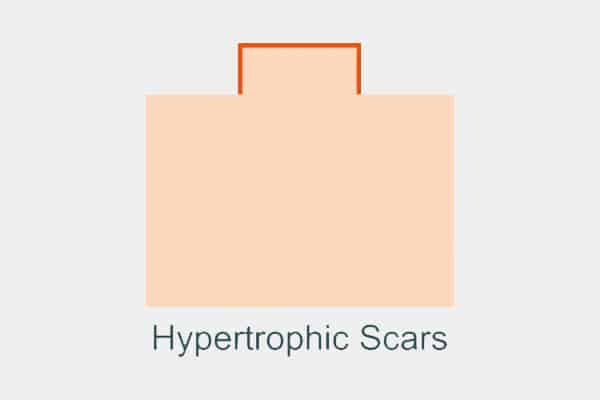
- Corticosteroids: They are administered as injections and considered the first-line acne scar removal tool for patients with hypertrophic or keloid scars. Injections are done every 6 weeks until the scar starts softening and flattening. There is a limit as to how many times we can use corticosteroids in the skin before weakening the normal tissue.
- Laser therapy: It is very effective as an acne scar removal therapy, especially in newly formed scars. Laser treatment for acne flattens elevated areas of the skin and lighten pink or reddish areas of the skin.
Treatments For Atrophic Scars
Atrophic acne scars treatment is slightly different. They are small depressions in the skin that create an uneven surface. They are generally categorised into three subtypes:
- Ice Pick Scars: They are very small and look like deep punctures, similar to holes you would do in a big ice cube with a pick.
- Boxcar Scars: This type of atrophic scar is a bit larger but has angled edges. They look like small craters instead of holes.
- Rolling Scars: It is an atrophic scar with a sloping edge. Instead of looking like craters, they take the form of a rolling hill or valley.

The following treatment options are recommended to address atrophic scar concerns.
TCA Cross Treatment Atrophic Acne Scars

TCA CROSS is recommended for ice pick scars and deep enlarged pores.
This acne scar removal treatment uses TCA (Trichloroacetic acid) in a high concentration. This acid denatures the proteins located at the deep layers of the skin. The denaturation stimulates protein synthesis, especially collagen synthesis, and in turn improves the appearance of enlarged pores.
Visible improvements usually take 3 or 4 sessions
Laser Resurfacing (CO2)

Laser resurfacing stimulates the natural repair process of the body to synthesize new collagen fibres and resurface the deepened areas of the skin. This laser treatment for acne works by reflecting light beams on the affected area. This heats the dermis underneath and triggers a remodelling process that helps to plump depressed areas and tighten the surrounding area so the scar appears less obvious. Downtime is expected after this type of treatment, which is variable depending on your circumstances.
Dermal Fillers
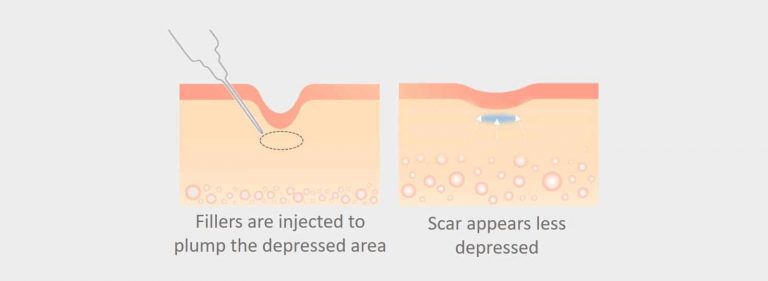
As the term implies, dermal fillers are meant to plump up or fill depressed or atrophic scars. These fillers are directly injected into the scarred area to create a smooth surface and restore the natural volume and plumpness of the skin. It is useful when scars leave a deep pit on the skin, and typically used when laser treatment for acne does not work as expected to solve the problem.
Subcision
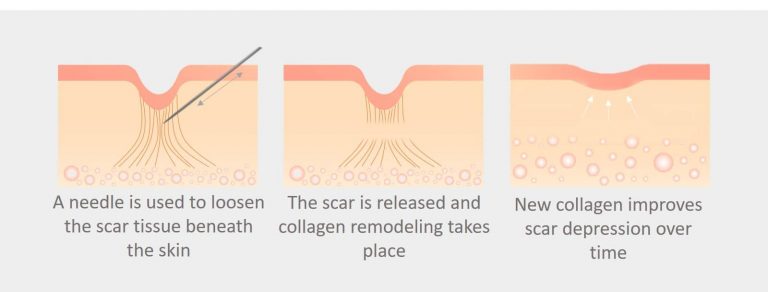
The main goal of subcision acne scar treatment is breaking down tethered down scars within the deeper layers of the skin. It is a surgical technique also known as subcutaneous incisionless surgery. Subcision acne scar treatment can be performed in the doctor’s office.
The scars are not located in the subcutaneous tissue but the dermis layer instead. A special needle will be introduced to the skin to reach deep scars and break down the tissue that keeps anchoring the skin to the deepest layers. During the healing phase, subcision treatment also stimulated the synthesis of collagen fibres and the natural repair of the skin.
Still Experiencing Active Acne?
If you are still experiencing breakouts, it is recommended to treat the active acne condition before progressing on to acne scar treatments.
Seek professional help early can prevent permanent scarring or worsening effect of acne.
Key benefits from treating acne condition early
- Will help to eliminate blemishes at an early stage before developing into acne cysts.
- Timely treatment decreases the likelihood of aggravating into chronic acne which may result to the need for stronger and more extensive treatment regime.
- Effectively prevents acne scars from developing.
- Improves individual skin’s condition physically as well as psychosocial effects.
Acne skin condition is treatable with Dream Acne & Scars Programme, a personalized treatment solution that will help you get rid of skin problems and regain your confidence.
Fractional RF (FRF) Treatment
Every single individual struggling with open pores, fine lines, or uneven skin tone can benefited from Fractional RF (FRF) Treatment. It helps to give the skin a fresh and healthy look with minimum risk or side effects.
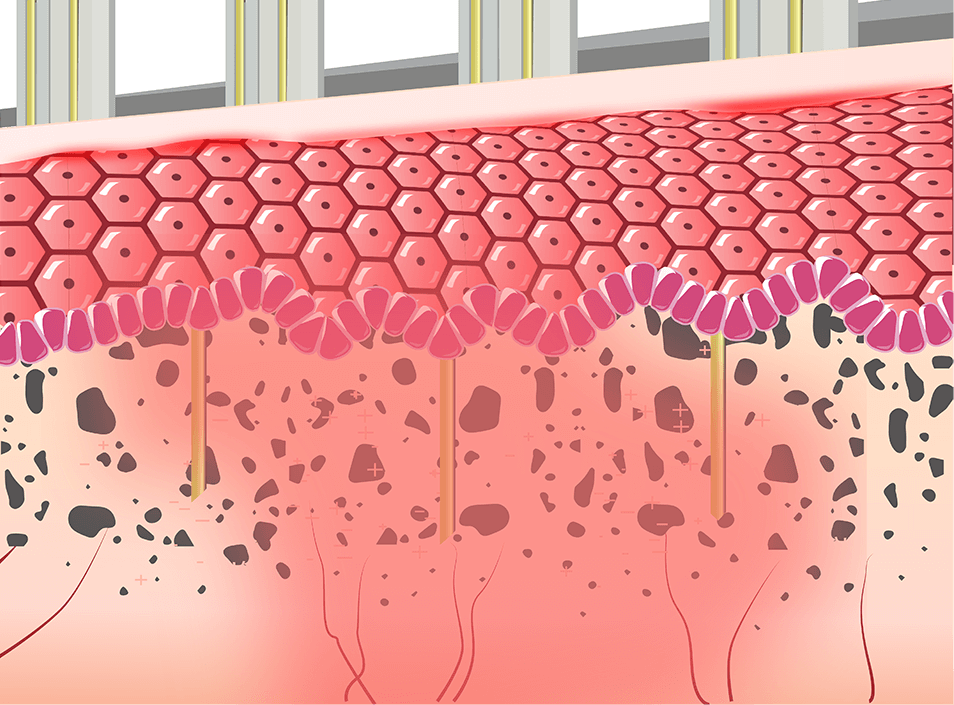
Step 1
Penetration of multi-micro electrodes
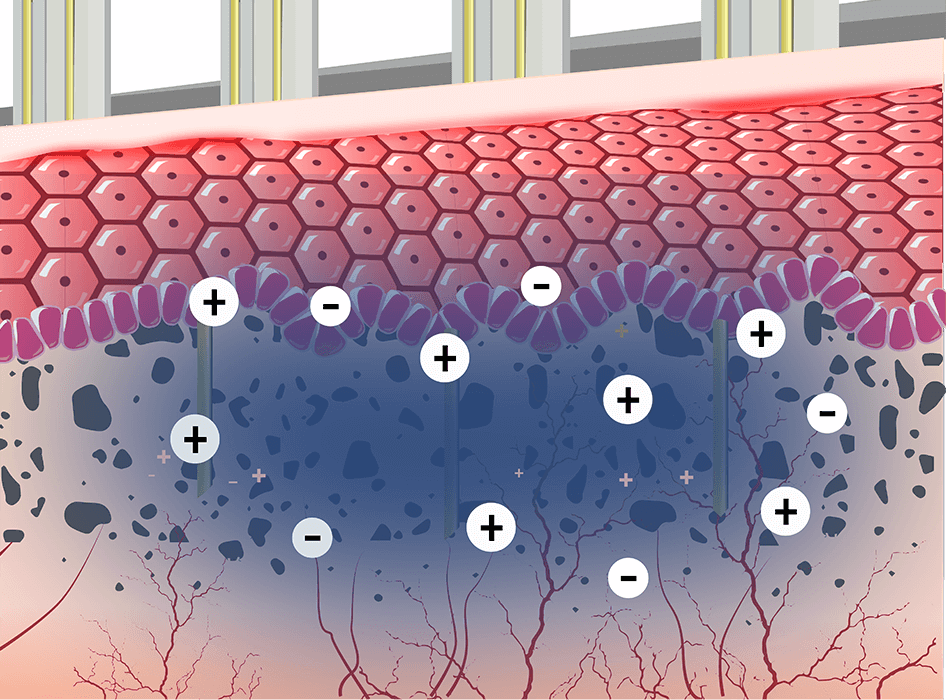
Step 2
Formation of electromagnetic
field
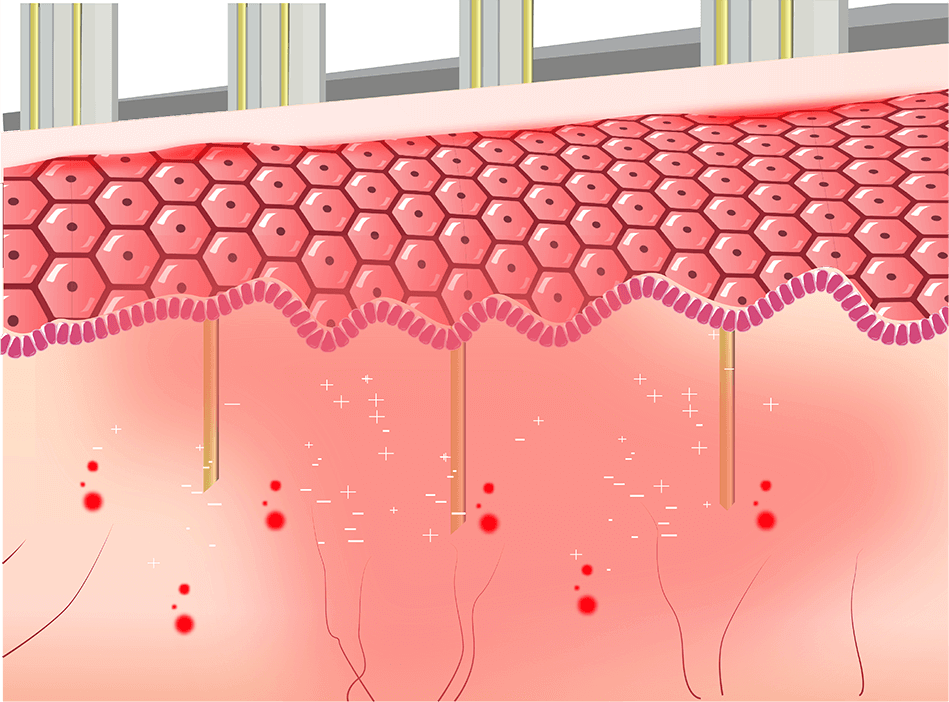
Step 3
Selectively react to abnormal vessels & stregthens basement membrane
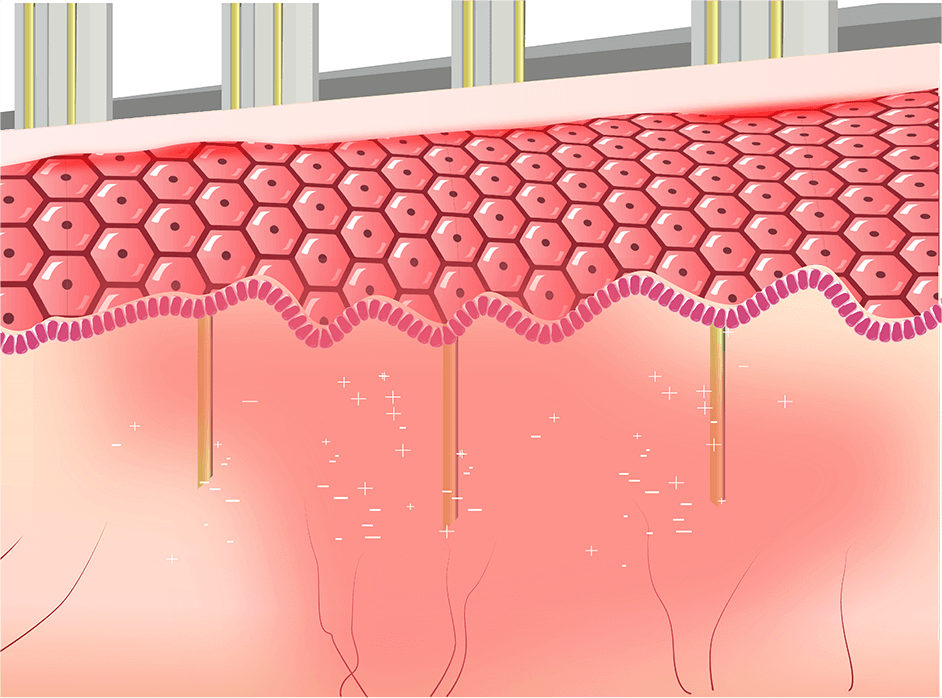
Step 4
Completion
Fractional (RF) treatment uses repeated ultra-short pulse technology that acts only on targeted sites. It reacts with abnormal blood vessels and hyper-pigmented tissues to reduce the appearance of acne scars or stretch marks. The radiofrequency generated in Fractional (RF) treatment raises the temperature of the skin to 60C. This either denatures the proteins or causes collagen coagulation. Consequently, the healing process of the wound is stimulated, and the skin layers remodel and rejuvenate. The eight different types of Continuous Wave (CW) & Pulsed Wave (PW) modes set in the Fractional (RF) treatment make it safe for treatment. Furthermore, the bipolar non-insulated electrodes direct the waves into all the dermal layers of the skin.
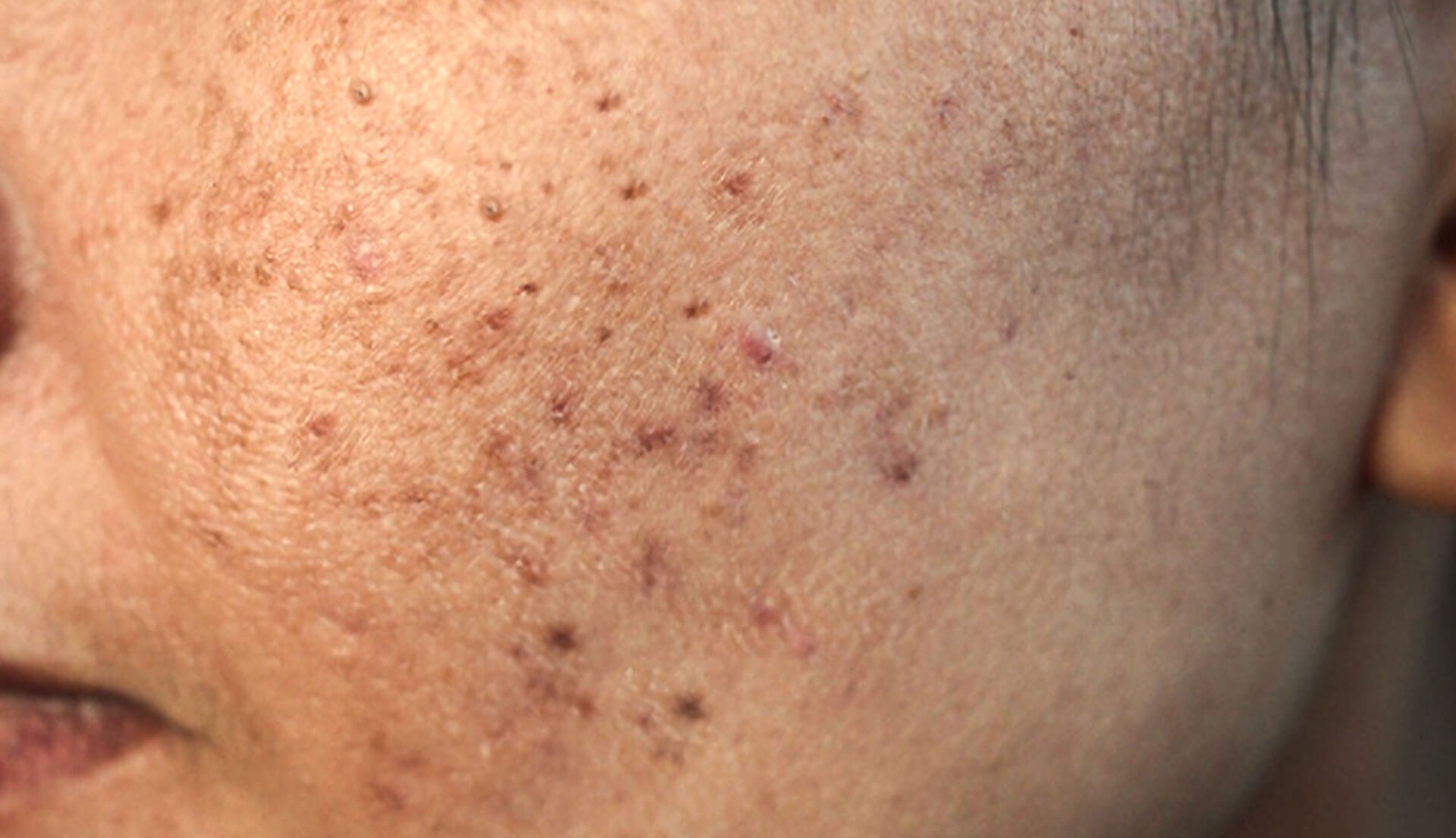
Acne Scars
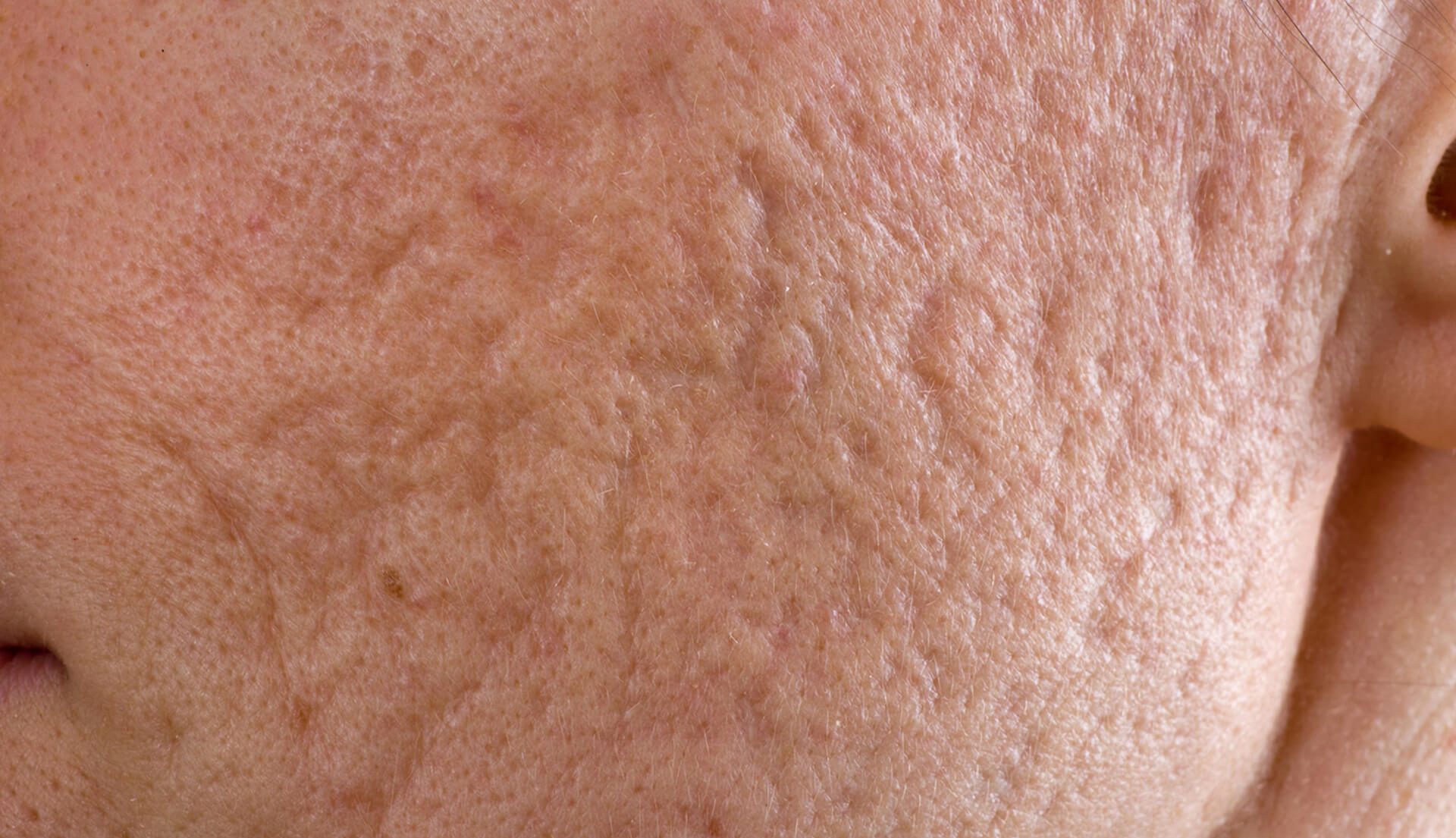
Atrophic Scars
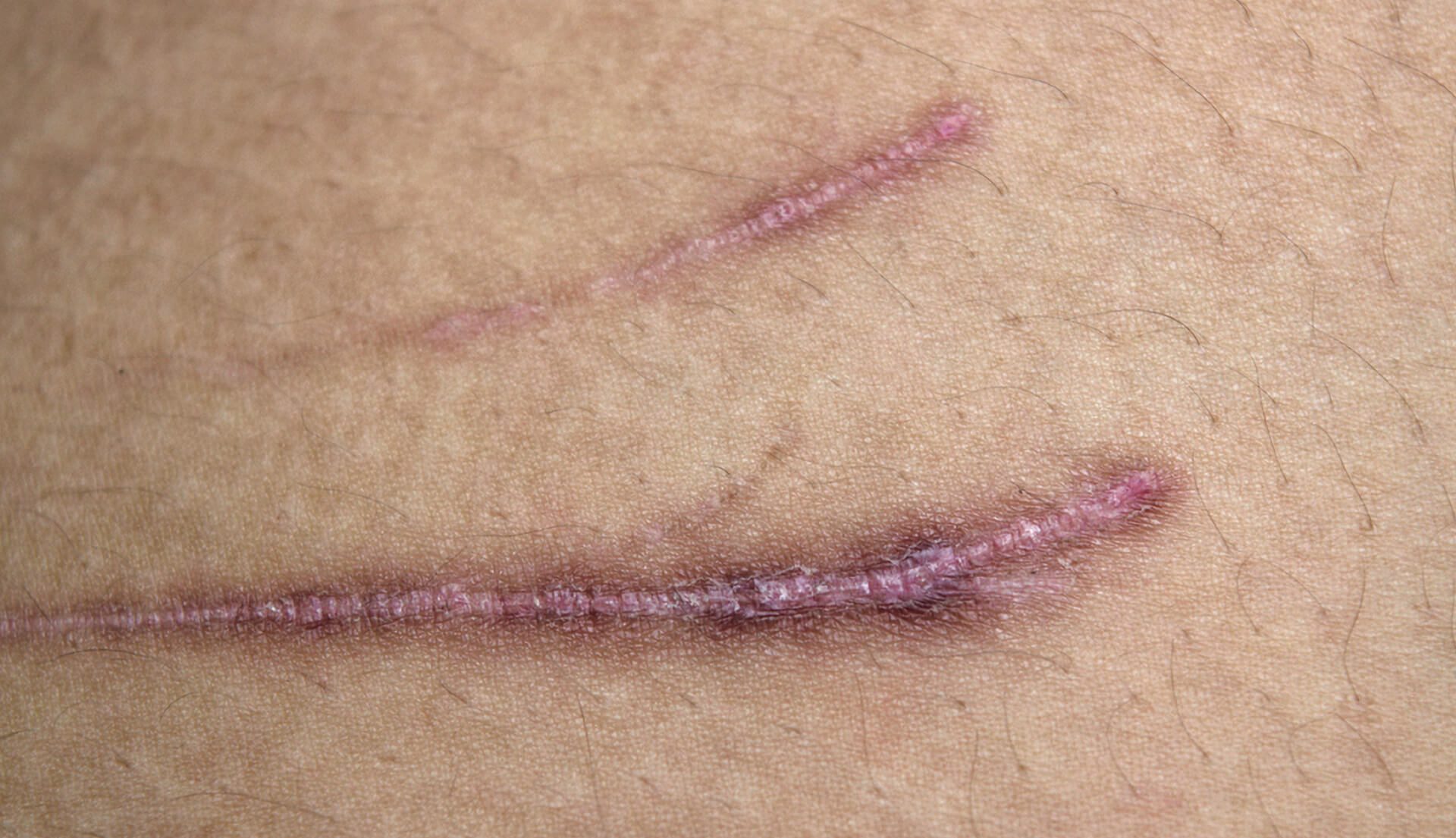
Scars
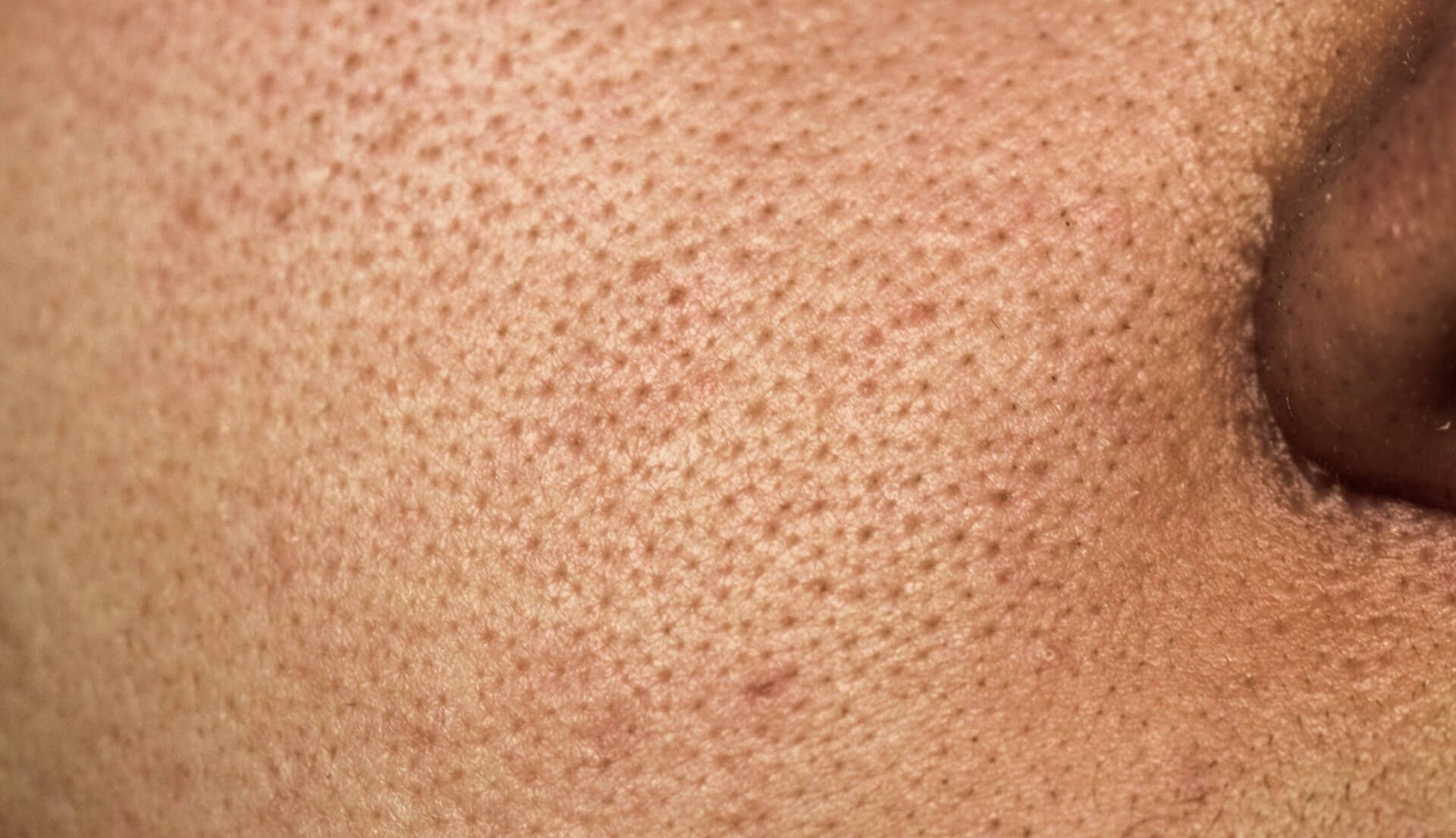
Pores
Specifically for the treatment of scars such as acne scars, hypertrophic scars, and atrophic scars, Fractional (RF) treatment help to minimize their appearance by stimulating collagen production, which can help to fill in the depressed areas of the skin. As a uniform electric field is generated around the scar’s skin, the PW treats the pigmentation caused by inflammation while CW tightens the skin. Maximum duration of 300ms of CW4 is used for resolving a scar mark. As with any skin treatment, the number of sessions required for optimal results will depend on the severity of the acne scars and the individual’s skin type. While some people may feel improvement in the appearance of their scar after 4 – 6 initial sessions, others might require more. An average time required for healing of acne scars is summarized in the table;
| Mild | 2-4 months |
| Moderate | 4-7 months |
| Severe | 6-20 months |
Fractional (RF) treatment is also used for improving stretch marks. As the micro-needles are inserted into the affected skin, they radiate the radio frequency waves. This generates an electrothermal effect that eventually heals the skin’s basement membrane so that it is strengthened. Simultaneously, the abnormal blood vessels are targeted, and the production of collagen and elastin is also stimulated. As the skin revitalizes and regenerates, improving the appearance of stretch marks.
Frequently Asked Questions (FAQ) about Acne Scar Treatments
What If I Am In The Middle Of A Break Out? Can I Still Get Laser Acne Scar Treatment?
The ideal time to receive acne scar treatment is to wait until active acne has stopped or when it is under control. This is because if you treat active acne there is a possible risk of further scarring, so all the efforts can go in vain. Thus, you must treat the underlying acne first. Once it is treated then you can work on scars lightening treatments.
Do The Acne Scars Stay The Same Or Do They Fade?
Acne scars are the result of a healing process. When the damaged healthy tissue is healed, the normal cells are replaced by fibrous tissue. Those people who are habitual of picking and squeezing the acne spots are at a greater risk of scar development.
The acne scars can heal and fade for some while it becomes permanent for others.
Can The Acne Scars Go Away On Their Own?
Yes, the acne scars can lighten or become less depressed as they heal naturally. Some individuals have experienced a decrease in the depth and contour without treatment. The healing ability relies on the following factors:
- Age
- Type of skin
- Skin tone
- Skin complexion
- Severity of the acne scar
Which Acne Scar Treatment Will Work For Me?
There are different types of identified acne scars:
- Ice pick scars
- Boxcar scars
- Rolling scars
- Atrophic scars
There is no one size fits all approach when it comes to treating acne scar. This is why a single treatment may not be effective and a proper treatment plan may involve different approaches. The best treatment option for you will rely on the following features:
- The discoloration on the skin
- Scar type and severity
- Skin type
The doctor will analyze all these factors before providing a personalized treatment plan.
How Much Improvement Is Expected?
The extent of improvement depends on the extent of acne scarring. If you have mild to moderate scarring, only a couple of treatment sessions can be effective for you. Number of treatment sessions required may be reduced if one is able to tolerate downtime from selected scar treatment.
In cases where a longer treatment duration is expected, one only sees full results 5 to 6 months after they have started their treatment journey.
Is One Laser Session Sufficient To Remove All Acne Scars?
Acne scars treatment takes time for results to unfold, so you need to be patient. CO2 laser treatment for skin resurfacing is one of the more effective treatment options. However, you can still expect some irregularities after the first visit prompting a second session for optimal results. The irregularities seen after the first session include:
- Some remaining scars
- Reddish-brown discoloration of the skin
- Uneven contouring of the skin
Is Surgery A Must To Remove Acne Scars?
The need for surgical removal depends on how the skin reacts to the treatment. Surgical or minimally invasive treatments have been used to great effect and may be recommended by the doctor to treat certain scar types.
Mild to moderate cases can be treated using:
- CO2 laser treatment
- Chemical peeling of the skin
- Subcision of skin (the process of fanning a needle under the scar tissue)
- Injecting fillers
Your genetics, severity of scars, and duration of the scars contribute to the complexity of the treatment. Therefore, a skin assessment is needed to determine the treatment approach.
Is There Any Downtime Associated With Acne Scar Treatment?
Depending on the treatment type, downtime differs from one treatment to another. Generally, minimally invasive procedures require downtime of around 7 days while the surgical method will take around 7 to 10 days.
How Many Treatments Do I Need?
In most cases, improvement can be observed from the second session onwards. In some cases, a series of 3-5 sessions may be recommended. This is because the condition of scars and skin healing ability varies between individuals and the number of treatment sessions is decided by the doctor.
Is The Acne Scar Removal Process Painful?
There may be slight pain involved in invasive treatments such as skin subcision. However, CO2 fractional laser and laser treatments are generally more tolerable.
What Are The Eligibility Criteria For Acne Scar Removal Treatment?
The eligibility criteria for every individual are unique and the doctor will carry out a complete analysis of the scar condition before discussing the treatment options with you.
What Should I Do After Acne Scar Treatment?
There are a few steps that you can follow to allow rapid healing and optimal results:
A. Keep The Treated Area Of Your Skin clean and Well Moisturized
There is a greater risk of bacterial infection after the treatment. This is because the integrity of the skin is compromised. Keeping the skin clean and well moisturized improves its healing process.
It is generally safe to use a gentle cleanser a few hours after the treatment unless advised otherwise. Light moisturizers prevent the skin from drying out and prolonging the recovery process. In cases where topical antibiotics are prescribed, follow the post treatment care instructions by the doctor for a smoother recovery.
B. Avoid Going Out In The Sun Or Use Sunscreen
It is recommended that you avoid direct sunlight for at least a couple of days. Post-treatment hyperpigmentation is a common phenomenon. Therefore, by avoiding the sun or applying sunscreen you can lessen the risk. Sunscreen should only be applied 24 hours after your treatment.
C. Avoid Wearing Make-Up After Treatment
Makeup and cosmetic products may cause harm to skin that is healing in progress. This is because makeup can interfere with the healing of the wounds and may also increase irritation of the skin. The bacteria exposure from those products can also increase the risk of infection of the wound site.
It is safe to apply makeup after 3 days of surgery. But only light makeup can be used. You can return to the normal routine once the acne scabs have healed.
D. Follow Doctor’s Advice On Skincare Use
Exfoliants are a good source of ridding your skin of dead cells but should be avoided during recovery. You should be cautious in using them and follow the doctor’s advice. Topical retinoids should be applied only after the completion of skin healing. It usually takes 7-10 days for the skin to heal completely.
E. Avoid Picking Your Skin
Many people are habitual of picking their skin. Scabs are common findings after laser treatments. It is recommended you refrain from picking the scabs that go away within 5-10 days.
